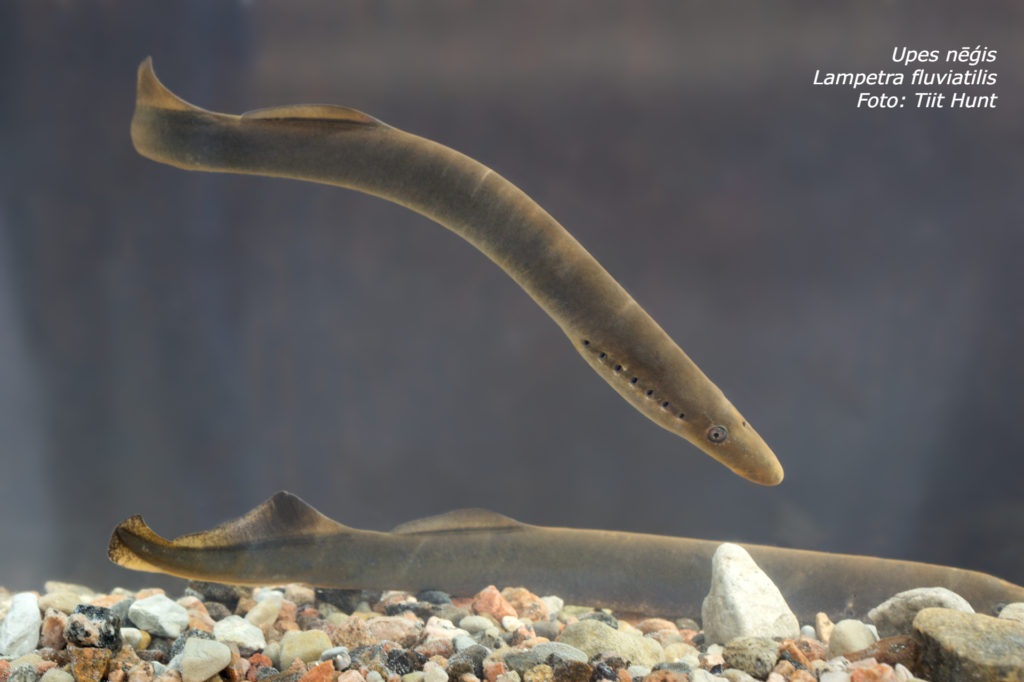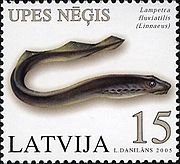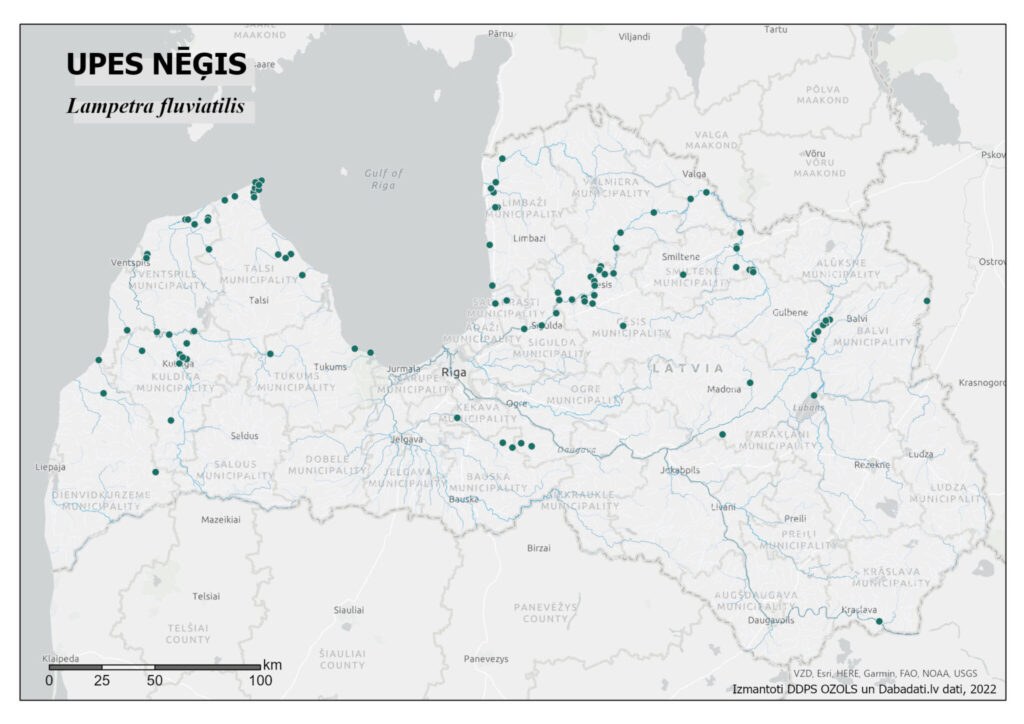Protected species of the month - river lamprey
At the end of August, the lamprey festival is celebrated in Latvia, in honor of which we will look at the river lamprey (Lampetra fluviatilis) as the species of the month.
The river lamprey is quite famous - a postage stamp is dedicated to it, and it can also be seen in the coat of arms of Carnikava parish. But did you know that the river lamprey is a specially protected species of European importance? In Latvia, the river lamprey has the status of a specially protected, limited use species. However, lamprey populations in the northern part of the Baltic Sea are less threatened, as a result, lamprey fishing is allowed in Latvia, Sweden and some other countries. Since 1960, lampreys have also been artificially propagated in Latvia.
The river lamprey is about 51 cm long and has a snake-like body without scales. The upper part of the back and sides of the river lamprey can be dark blue-green, blue-gray or greenish-brown. The river lamprey has three eyes - two of them are located on the sides of the head, and the third is located on top of the head, hidden under the skin. The third eye has remained in the mask stage and is able to perceive only signs of brightness of light.
River lampreys spawn at the age of 4-7 years, once in their lifetime, and die after spawning. Lamprey eggs hatch into 3-4 mm long larvae, or grubs, which spend several years buried in the ground. After metamorphosis, lampreys become free-swimming predators that go to sea. The river lamprey spends 1-3 years in the sea, after which it goes to spawning grounds in rapid rivers. Pike enter the rivers already from the end of July, this can continue until the spawning time of the following June.



